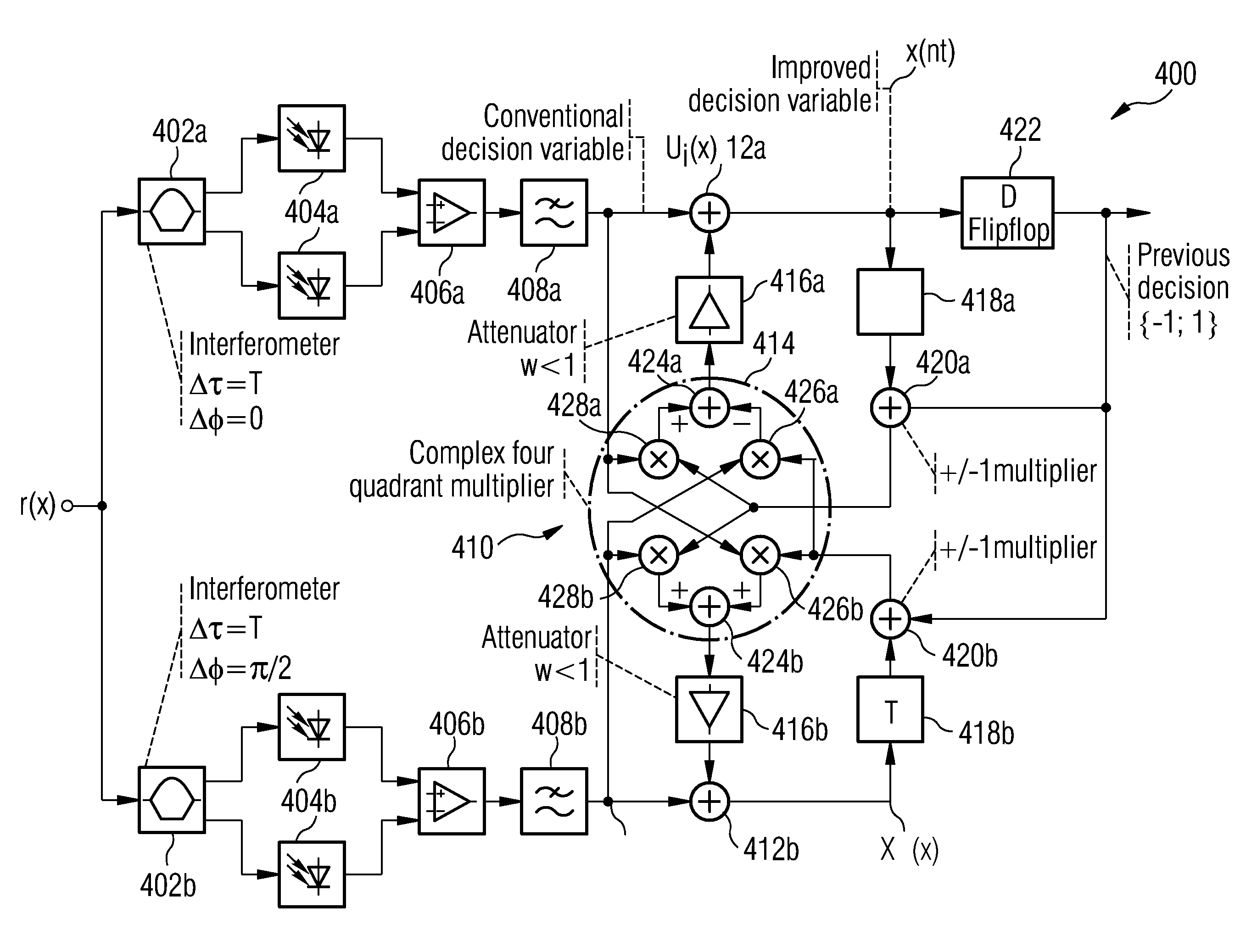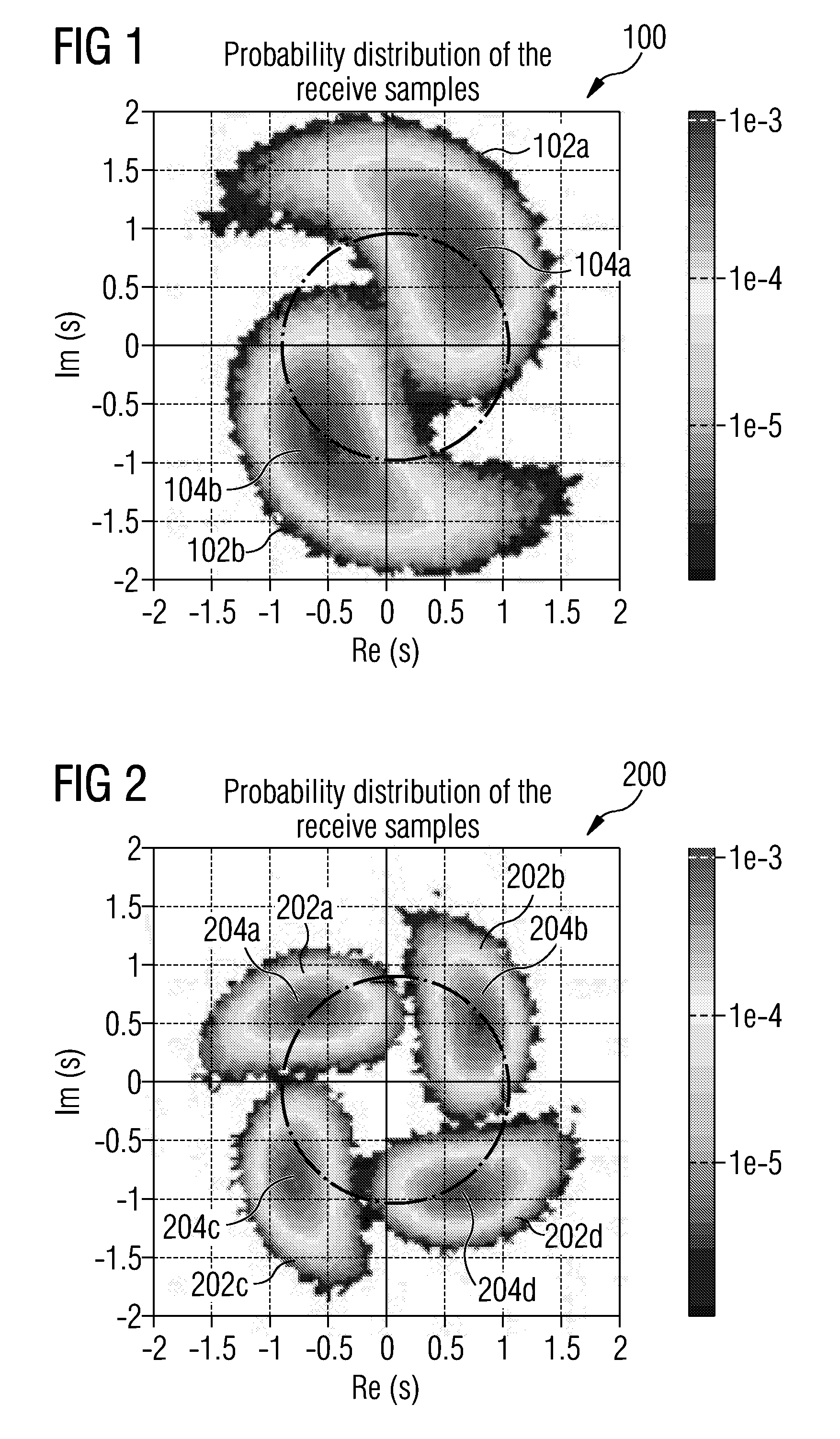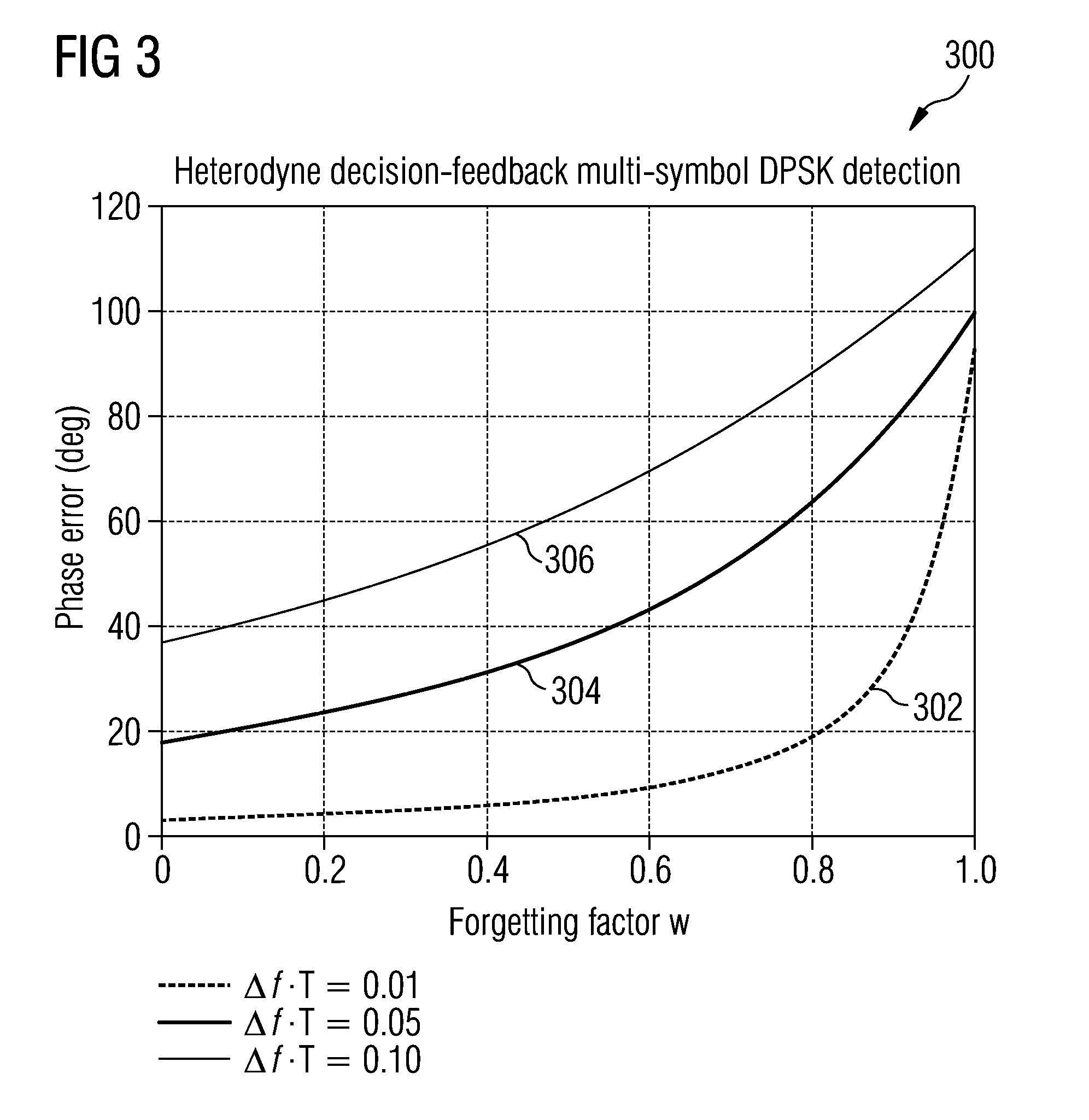Method and apparatus for demodulating an optical differential phase-shift keying signal
a technology of optical differential and phase shift, applied in phase-modulated carrier systems, digital transmission, electromagnetic transmission, etc., can solve the problems of large penalty increase, relatively complex homoodyne technique, and inability to employ, so as to achieve high accuracy for optics solutions, reduce complexity, and improve accuracy
- Summary
- Abstract
- Description
- Claims
- Application Information
AI Technical Summary
Benefits of technology
Problems solved by technology
Method used
Image
Examples
Embodiment Construction
[0036]According to the technique of the proposed invention, the disturbance attributed to frequency offset is avoided whilst achieving excellent performance characteristics. This is achieved in the present invention by applying a self-homodyne receiver for receiving the optical signal. Since self-homodyne receivers are not dependent on a local oscillator, the problem of frequency offset is avoided. In order to account for this new receiver applied at the front end of an optics demodulator, a unique post-processing apparatus and process was needed to be invented. That process in essence performs a comparison on the decision using a recursion technique, thereby producing an improved decision variable x(nT).
[0037]An exemplary implementation 400 of the invention shall now be described with reference to FIG. 4. The received signal r(t) is split into two portions and sent through an optical receiver, the self-homodyne receiver of the present invention. In one aspect of the invention, the ...
PUM
 Login to View More
Login to View More Abstract
Description
Claims
Application Information
 Login to View More
Login to View More - R&D
- Intellectual Property
- Life Sciences
- Materials
- Tech Scout
- Unparalleled Data Quality
- Higher Quality Content
- 60% Fewer Hallucinations
Browse by: Latest US Patents, China's latest patents, Technical Efficacy Thesaurus, Application Domain, Technology Topic, Popular Technical Reports.
© 2025 PatSnap. All rights reserved.Legal|Privacy policy|Modern Slavery Act Transparency Statement|Sitemap|About US| Contact US: help@patsnap.com



